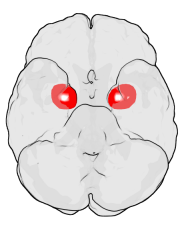
Photo from wikipedia
Anxiety disorders are among the most prevalent psychiatric disorders, causing significant suffering and disability. Behavioral inhibition is a temperament that is linked to an increased risk for the later development… Click to show full abstract
Anxiety disorders are among the most prevalent psychiatric disorders, causing significant suffering and disability. Behavioral inhibition is a temperament that is linked to an increased risk for the later development of anxiety disorders and other stress-related psychopathology, and understanding the neural systems underlying this dispositional risk could provide insight into novel treatment targets for anxiety disorders. Nonhuman primates (NHPs) have anxiety-related temperaments that are similar to those of humans with behavioral inhibition, facilitating the design of translational models related to human psychopathology. Characterization of our NHP model of behavioral inhibition, which we term anxious temperament (AT), reveals that it is trait-like. Exploration of the neural substrates of AT in NHPs has revealed a distributed neural circuit that is linked to individual differences in AT, which includes the dorsal amygdala. AT-related metabolism in the dorsal amygdala, including the central nucleus, is stable across time and can be detected even in safe contexts, suggesting that AT has trait-like neural signatures within the brain. The use of lesioning and novel chemogenetic methods allows for mechanistic perturbation of the amygdala to determine its causal contribution to AT. Studies characterizing the molecular bases for individual differences in AT in the dorsal amygdala, which take advantage of novel methods for probing cellular and molecular systems, suggest involvement of neurotrophic systems, which point to the importance of neuroplasticity in AT. These novel methods, when used in combination with translational NHP models such as AT, promise to provide insights into the brain systems underlying the early risk for anxiety disorder development.
Journal Title: Biological Psychiatry
Year Published: 2021
Link to full text (if available)
Share on Social Media: Sign Up to like & get
recommendations!